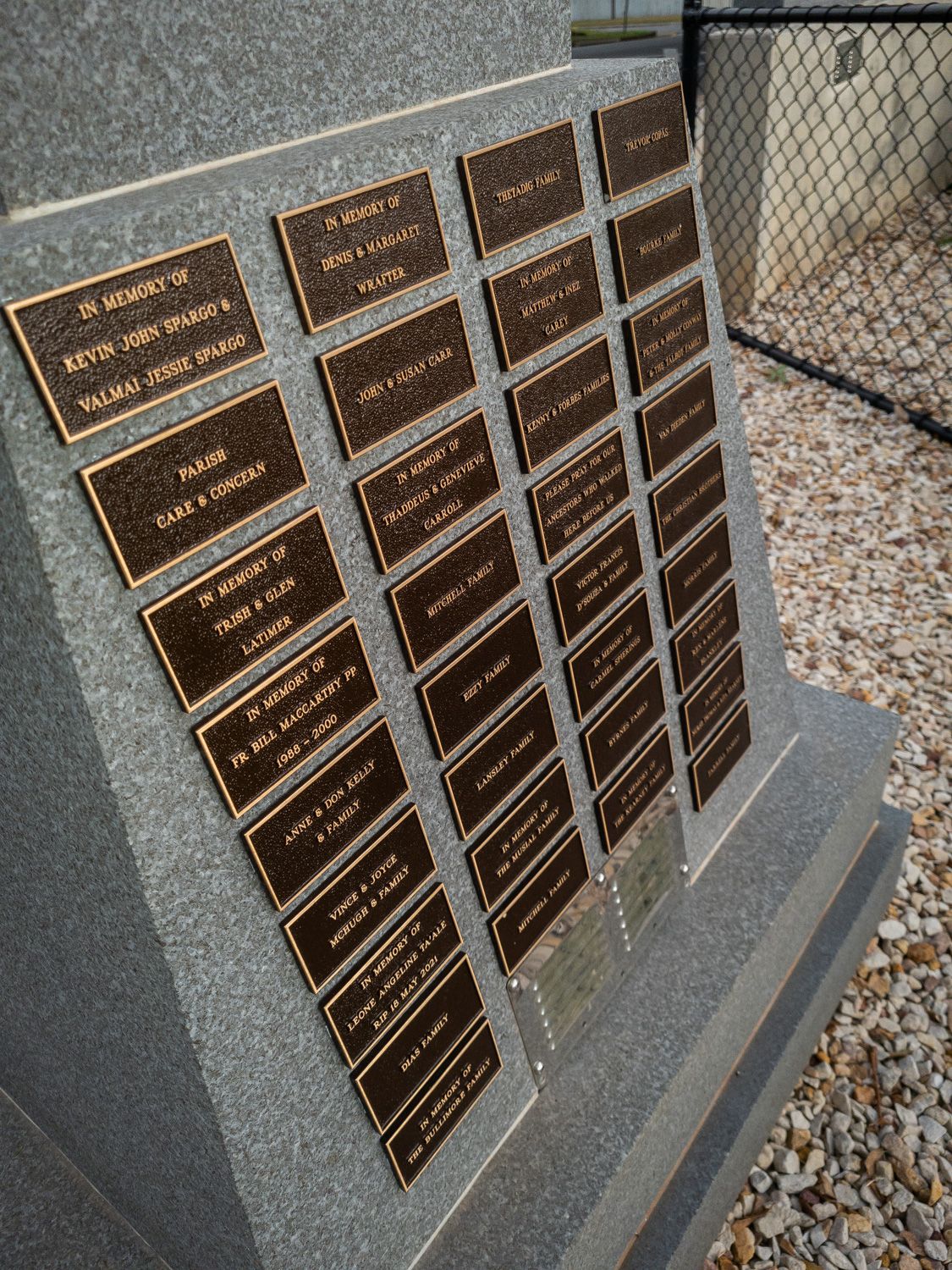The Banyo Cross
Holy Trinity Catholic Church Banyo



The Banyo Cross – Upon witnessing Archbishop Francis Rush opening the Holy Trinity Church in 1975, the young Fr Bernie Gallagher was not to know how significant the building would become for the Catholic community and people of the Banyo Nudgee district.
Little did he know Fr Bernie would eventually become the Parish Priest and guardian of the Church and its grounds. Upon its opening almost 50 years ago, Holy Trinity Catholic Church was the exterior was adorned with a beautiful large white timber cross. The cross fulfilled the important role of ensuring that passers by were aware of the church and the sanctuary it provides to the community.
After many years enduring the harsh Australian elements and a voracious family of termites, the original timber cross was deemed unsafe and in need of replacing. The decision was made to craft a new cross that offered a true representation of the community and the history of the parish.
The planning of a new monument and an upgrade of the grounds commenced in earnest and the concept of The Banyo Cross quickly developed.
It was important that the monument’s design incorporated several elements significant to the community, including the nearby memorial guardian containing the remains of several people who made significant contributions to the Banyo Nundah Catholic Parish.
Design Elements of the Monument
The design of the cross and its surroundings were created to pay homage to the rich history of the parish, the generous families whose donations funded the project and the Catholic community. Every element was carefully designed and painstakingly crafted using traditional stonemasonry techniques.
The new installation encompassed not only the cross itself but also a new plaque on the wall of the church to commemorate the monument, refreshing of landscaping and more. Here we take a look at the cross itself and the design elements that make it unique.
Hand Drawn Artwork
The Banyo Cross stands tall with its Celtic Cross design sculpted from granite. But the key feature of the cross is the custom hand drawn artwork that was meticulously etched using a combination sandblasted lettering and raised natural inscription technique providing a unique result.
The choice of using natural engraving without adding paint or colour, allows the granite colour to be showcased and provides a lovely textured canvas for the artwork.
Each panel showcases individual elements combining to create a unique story that reflects the lifestyle of those in the community since the Church’s inception. It follows the theme taken from the Offertory ritual of the Eucharist:
“Fruit of the earth, and work of human hands”
This theme was chosen largely due to its relevance to the people and the geography of the area defined as Banyo/Nudgee locality. The area is rich in red volcanic soil and waterways meeting mangroves and seafront. Traditionally these natural features were a source of shelter and food for the indigenous Turrbal people and later on, for European settlers.
The artwork has a unifying effect when representing the layered multicultural history of the locality. It was hand drawn by Peter Wrafter and customised to suit the engraving process. The final result is unique and beautiful.

Panel 1
The top panel features the universal symbol of the Southern Cross, under which all Australians live and which timeless symbol of the presence of God since time began.
The bottom half of the panel is the top of a grape vine that travels through all three panels, linking them symbolising the unifying power of the Eucharist in the life of the people of God.

Panel 2
The land upon which the Holy Spirit Seminary and ACU Catholic University stands was once known as Bee-hive Hill due to a prolific bee population. The property where the Holy Trinity Church and St Pius School are located was once known as Pinesville; where pineapples were produced in the earliest pineapple factory in Red Hill Rd.
It is therefore fitting that a panel featuring the architecture of these buildings should also depict the natural elements of bees and pineapples from which the properties were named.
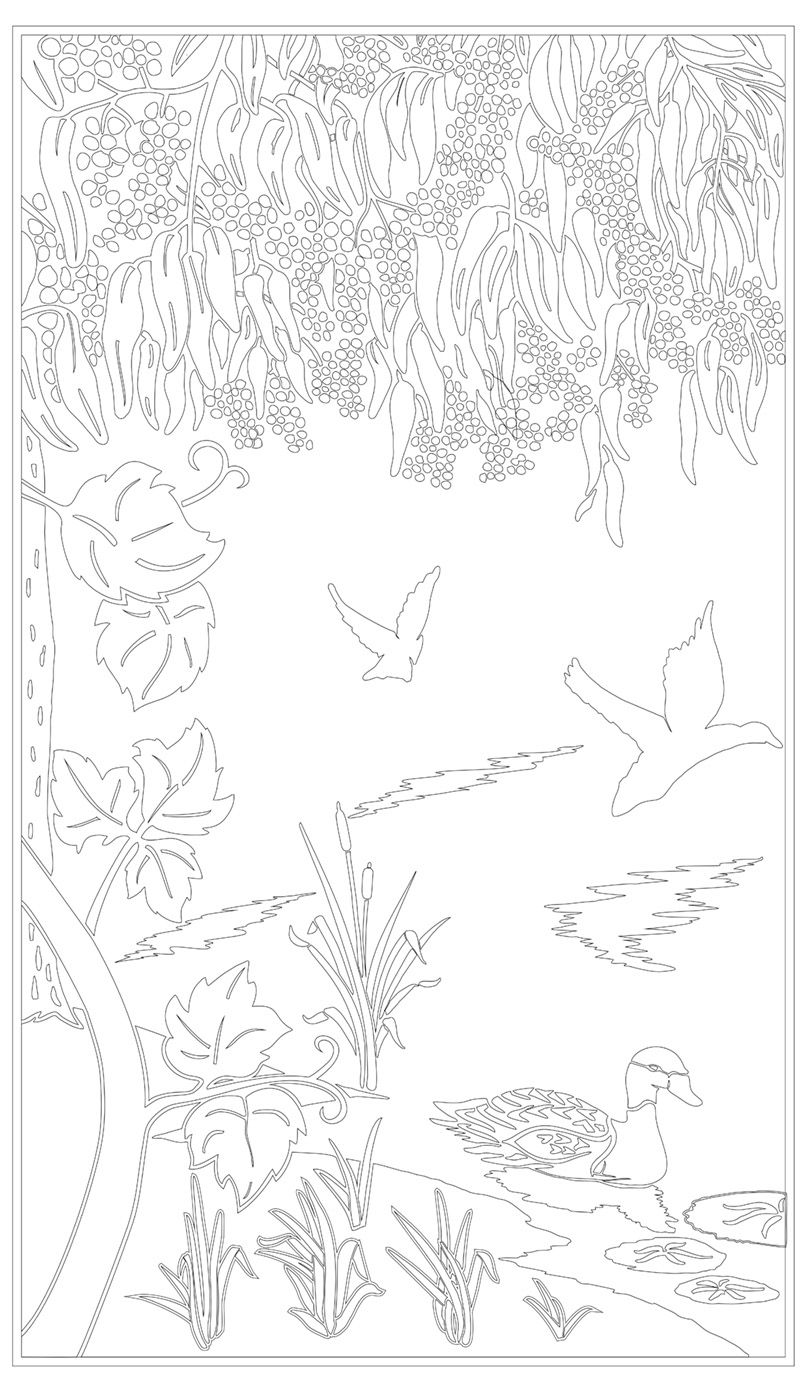
Panel 3
The bottom panel is the most intricately designed of the three. It is the base of the design and features black ducks in the Nudgee lagoons. These represent the special symbol for the Turrbal people in this district prior to European settlement.
The grapevine leaves and fruit that unify all three panels are symbolic of the Eucharist but also acknowledge the presence of the vineyards in the Nudgee and Cribb Island areas.

Panel 1 finished
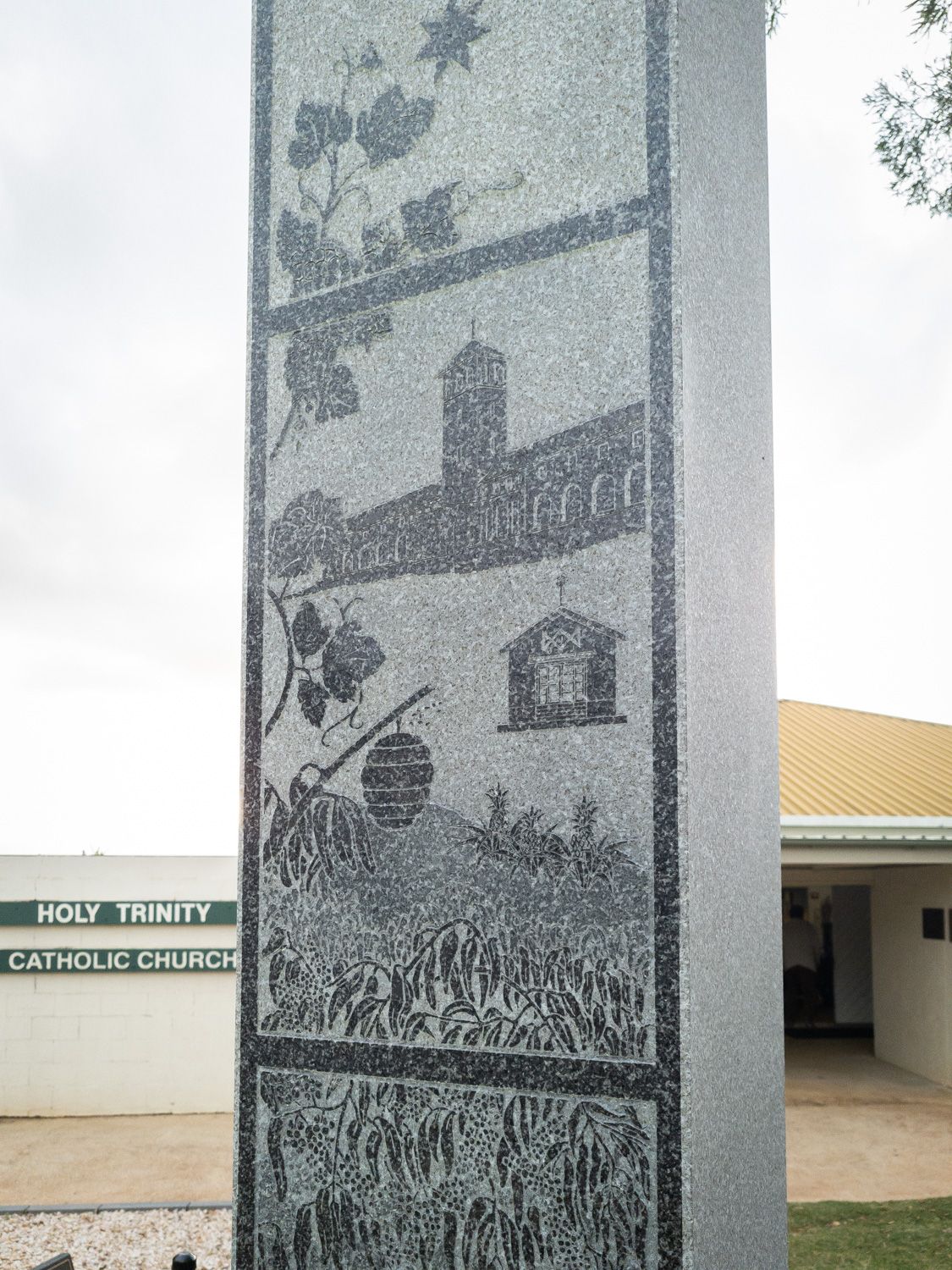
Panel 2 finished

Panel 3 finished
Construction and Installation of the Banyo Cross
As with all monuments, especially those of significant size and proportions, construction and installation require a complex process. Detailed planning and the use of machinery to assist placement of the heavy elements are crucial to a smooth installation and resolved final piece. Here are some behind the scenes images of the steps involved in the design, construction and installation of the Banyo Cross at Holy Trinity Catholic Church, Banyo.
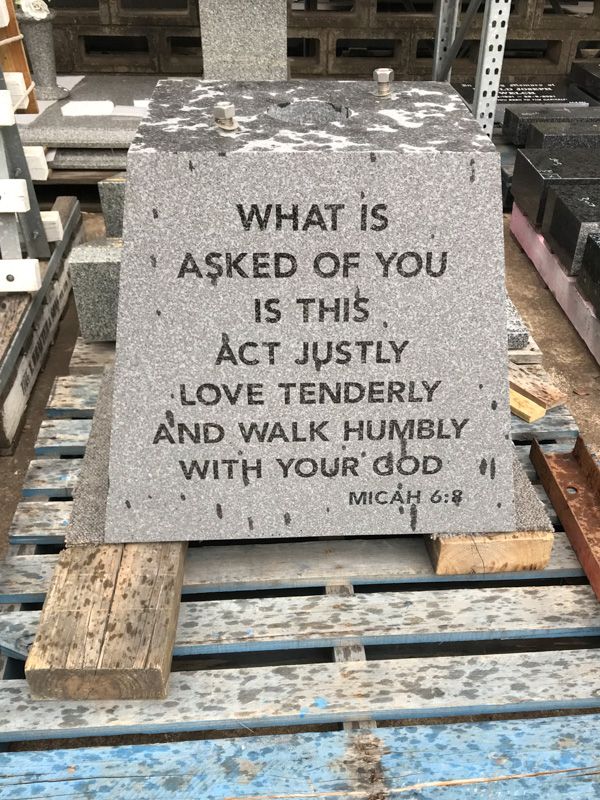
Granite diestone
The base granite diestone features a bible verse:
What is asked of you is this
Act justly
Love tenderly
And walk humbly with your God
Micah 6:8

New sign
The upgrade and refurbishment of the area housing the Banyo Cross included the installation of a new Holy Trinity Catholic Church engraved granite sign.

Finish cross
The cross has been finished with its intricately engraved, sandblasted artwork designs.

Concrete foundations
Working from the ground up, concrete footings are constructed to create a foundation for the base of the monument.

Finished granite diestone.
Installed and awaiting the addition of the cross to complete the structure.

Lifting cross
Lifting the cross into place with a crane to begin to carefully place it onto its foundation.
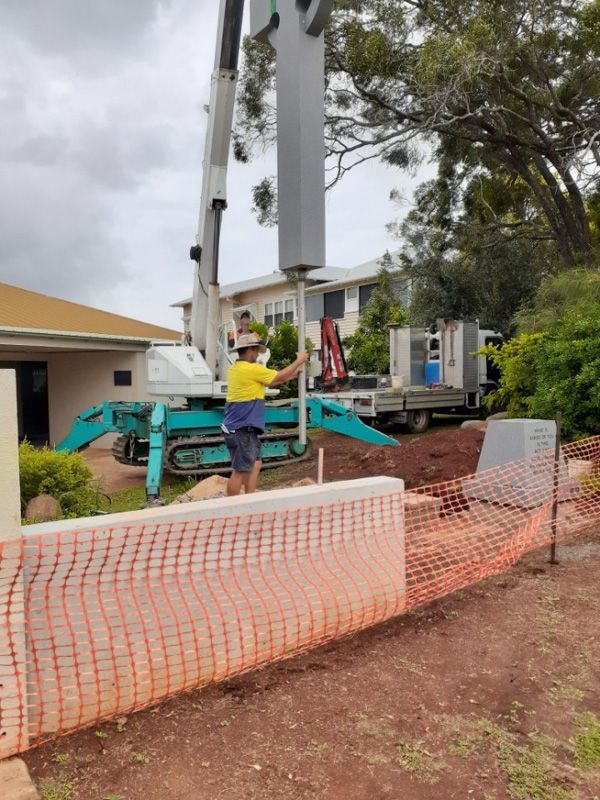
Guiding the cross
As it is lowered into place, stonemasons guide it the steel supports into the footing and diestone.

Cross installation
Finally the cross reaches its destination and is securely placed into its permanent position.
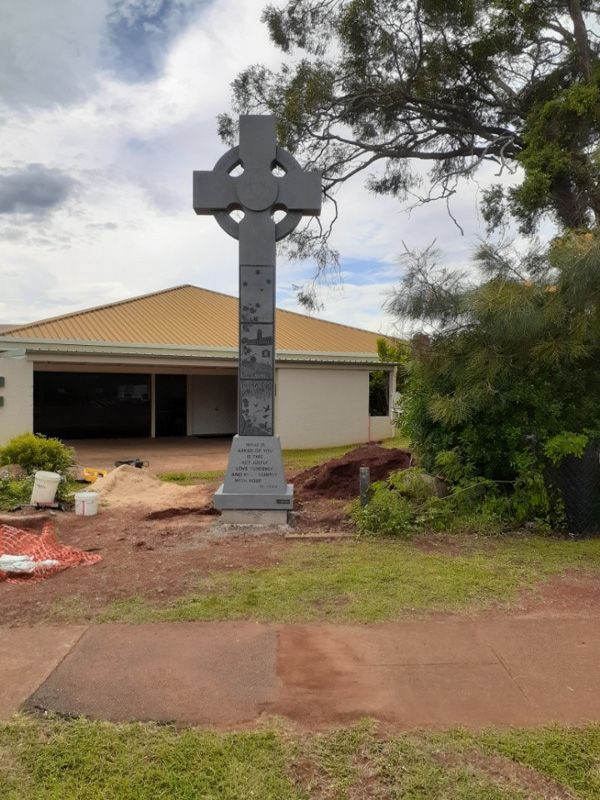
Finished cross in place.
Ready for the final elements of landscaping, plaques and protective fencing to be added.
Finishing details and commemorative plaques
The design and construction of The Banyo Cross was a huge project, financially and morally supported by the church community. As such, gratitude was expressed through the addition of several memorial plaques to acknowledge the contributions. Here are some of those details:



The Banyo Cross – an exercise in community and history
The T. Wrafter & Sons team were privileged to be selected to create such an important piece in commemorating the evolving history of the Banyo Nundah Catholic Parish. Significant time and investment went into developing it and the community now gets to benefit from a meaningful and unique monument at their church.
We welcome the opportunity to work alongside you and invite you to make an appointment to visit our Nudgee office to discuss your requirements.

